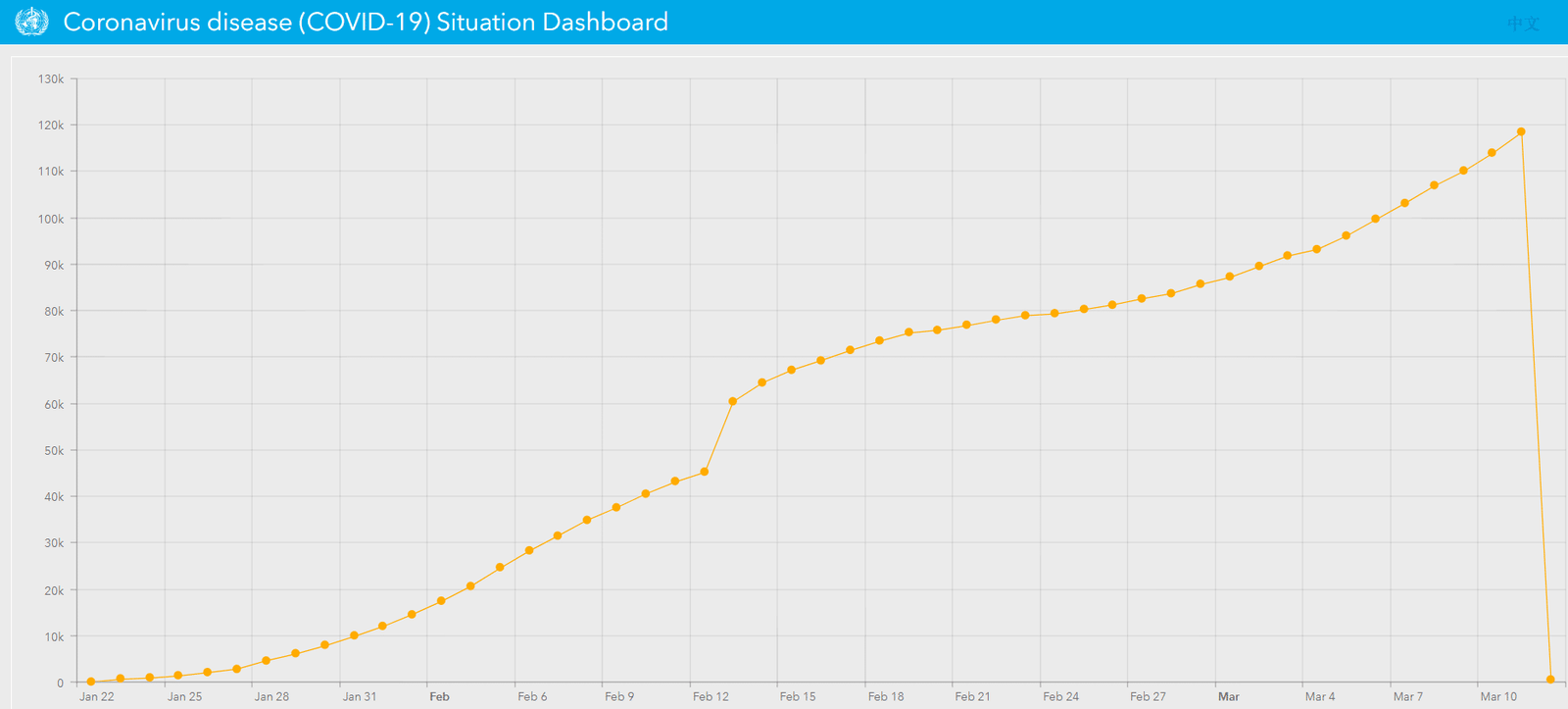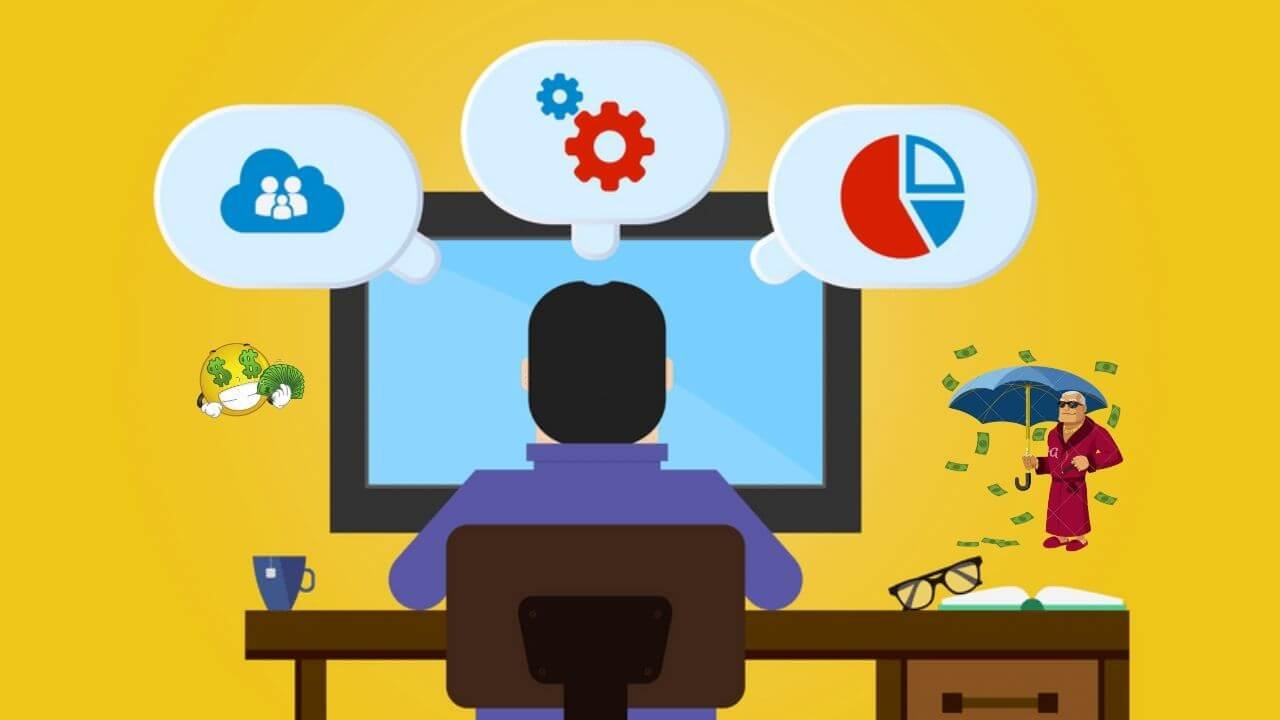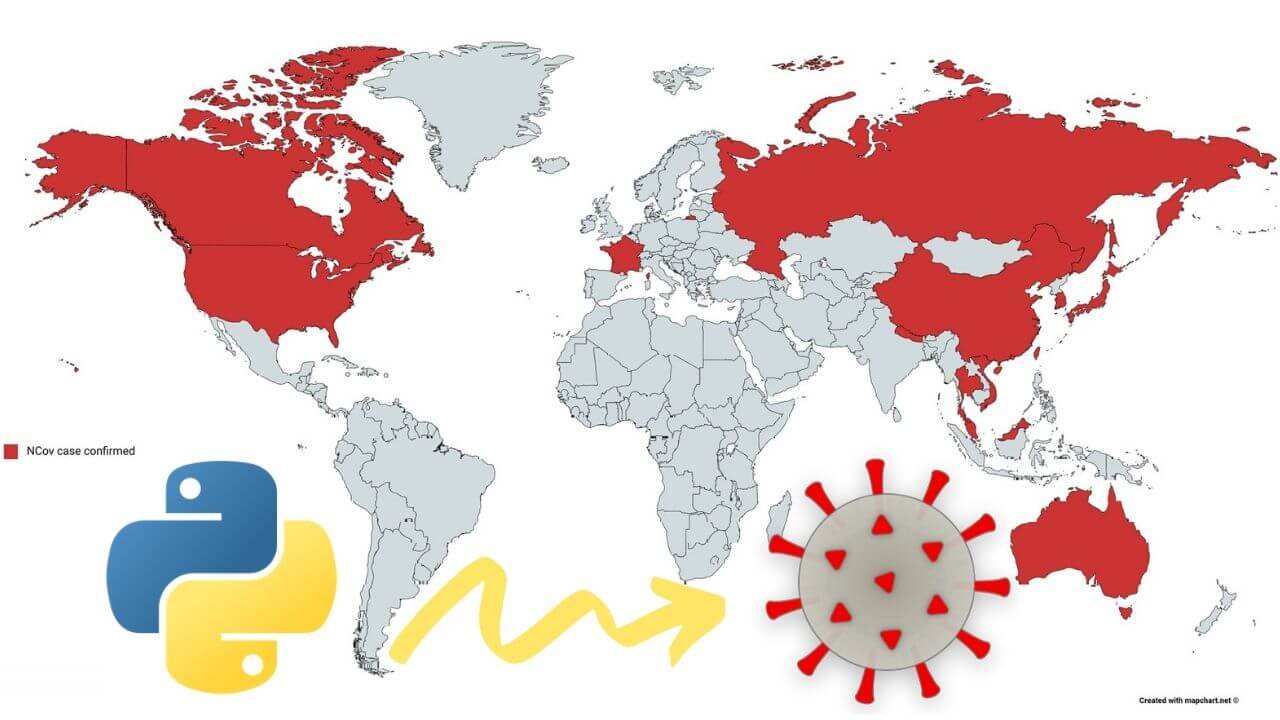The Coronavirus pandemic is a pandemic of coronavirus disease 2019 (COVID-19) caused by severe acute respiratory syndrome coronavirus 2 (SARS-CoV-2).
The outbreak spread to over 100 countries before being recognized as a pandemic by the World Health Organization 11 March 2020.
This virus is responsible for over 25,000 deaths, and it grows at a high rate. The top five countries with the most deaths at the moment are: Italy, China, Spain, France, and Iran.
The communities are joining together thinking for the best ways of protection, and everyone is trying to bring its qualities on the table in order to find an appropriate solution that will stop the virus.
We had some ideas about how can advanced techniques like Machine Learning and Data Science can help in our post about how to fight against Coronavirus (COVID-19) with Machine Learning, but we decided to find out in more details what libraries of Python can help us in defeating the Coronavirus (COVID-19).
Read these books to improve your knowledge even more:
Python for Data Analysis: Data Wrangling with Pandas, NumPy, and Python – Buy from Amazon

Python Crash Course, 2nd Edition: A Hands-On, Project-Based Introduction to Programming – Buy from Amazon

Best ways that Python can defeat the Coronavirus
Python, as we all know, is the most popular language in the world, and certainly is the most popular language in the Machine Learning and Data Science communities.
The reason is known to everybody, it is very easy to work with, it has very clear and understandable syntax and has tons of Machine Learning, Deep Learning, and Data Science libraries as well as tons of good web development libraries that makes it very easy to build web Machine Learning powered application in one codebase.
What follows are our top suggestions of how Python can defeat the Coronavirus.
Python’s Time Series analysis libraries

For now, there are a couple of datasets available from different sources on the internet that contain the number of confirmed, death and recovered cases from the Coronavirus.
All this data is for a certain date, which means it can be used in order for prediction to be made for the numbers of future infections. When you want to do such predictions, you need to build the appropriate models that understand those types of data.
We already made to articles about the Coronavirus, that predict the number of confirmed cases, death cases and recovered cases for the future period.
If you are interested, check them out: Predicting the Number of Infected People by the Coronavirus with Python Code, Forecasting the Spread of Coronavirus (COVID-19) Using Python.
Python has a couple of libraries that are good at Time Series analyses: statsmodels.tsa (contains model classes and functions that are useful for time series analysis. Basic models include univariate autoregressive models (AR), vector autoregressive models (VAR) and univariate autoregressive moving average models (ARMA).
Non-linear models include Markov switching dynamic regression and autoregression. It also includes descriptive statistics for time series, for example, autocorrelation, partial autocorrelation function and periodogram, as well as the corresponding theoretical properties of ARMA or related processes.
It also includes methods to work with autoregressive and moving average lag-polynomials), fbprophet(which is used for forecasting time series data based on an additive model where non-linear trends are fit with yearly, weekly, and daily seasonality, plus holiday effects.
It works best with time series that have strong seasonal effects and several seasons of historical data. Prophet is robust to missing data and shifts in the trend, and typically handles outliers well).
A good example of non-traditional time series libraries that can be useful is XGBoost (which is an optimized distributed gradient boosting library designed to be highly efficient, flexible and portable. It implements machine learning algorithms under the Gradient Boosting framework.
XGBoost provides a parallel tree boosting (also known as GBDT, GBM) that solve many data science problems in a fast and accurate way).
Python’s Computer Vision/Image Processing libraries

We know that Python, along with C++ is very popular for doing image processing. There are tons of examples of how Python’s image processing libraries are capable of detecting cancer, broken bones and other types of anomalies from x-ray images and computer tomography images.
Since we can make those types of images for such deceases, we can do the same the Coronavirus. That way we can build different models based on images of the virus in the early and later stages.
The model than can help in discovering if the patient is infected when the patient has some symptoms of the virus, and it can be stopped in the early stages. One of the best examples of these libraries are: OpenCV (library of programming functions mainly aimed at real-time computer vision.
Along with Python, it supports Java and C++, scikit-image(which is a collection of algorithms for image processing. It is available free of charge and free of restriction), Dlib (which is a modern C++ toolkit containing machine learning algorithms and tools for creating complex software in C++ to solve real-world problems.
It is used in both industry and academia in a wide range of domains including robotics, embedded devices, mobile phones, and large high-performance computing environments (it has a Python version as well), etc.
Python’s drone libraries

In our previous post, we were talking about the autonomous or semi-autonomous drones that can be created in order to deliver groceries to our homes while we are in quarantine.
Some companies already had ideas for such a thing even before the Coronavirus (COVID-19) outbreak. There are a couple of libraries in Python that make this possible: easyTello (which is a Python library created to provide users with a simple way to interface and send commands to the DJI Tello drone, as well as to simply and easily teach students how to control the drone using Python 3) and DroneKit (which helps you create powerful apps for UAVs.
These apps run on a UAV’s Companion Computer, and augment the autopilot by performing tasks that are both computationally intensive and require a low-latency link (e.g. computer vision)).
Python’s general Machine Learning, Data Science and Visualization libraries

Under the “general” libraries, we were thinking of libraries that any of us knows and uses the most. Those are libraries that we use “by default” in our projects, and without those, you cannot use other libraries.
Obviously, since these libraries are so important, we must refer them here. A good example of “general” libraries are: Numpy (which is the fundamental package for scientific computing with Python.
It contains among other things: a powerful N-dimensional array object sophisticated functions, tools for integrating C/C++ code, useful linear algebra tools), pandas (which is a fast, powerful, flexible and easy to use open-source data analysis and manipulation tool), SciPy (The SciPy library is one of the core packages that make up the SciPy stack.
It provides many user-friendly and efficient numerical routines, such as routines for numerical integration, interpolation, optimization, linear algebra, and statistics), matplotlib (which is a comprehensive library for creating static, animated, and interactive visualizations) and scikit-learn (which is library that will allow you to make: classification, regression, clustering, dimensionality reduction, model selection and preprocessing).
Python’s Deep Learning libraries

There are thousands of examples of how Deep Learning improves every single Machine Learning algorithm, resulting in predictions and decisions equal to or greater than the humans level intelligence.
All of the algorithms mentioned in the previous categories can be pared with Deep Learning, and it might create the success formula in the fight against the Coronavirus.
Good examples of Deep Learning libraries are:
- Tensorflow – which is a free and open-source software library for dataflow and differentiable programming across a range of tasks. It is a symbolic math library and is also used for machine learning applications such as neural networks, PyTorch (which is an open-source machine learning framework that accelerates the path from research prototyping to production deployment).
- Theano – which is a Python library that allows you to define, optimize, and evaluate mathematical expressions involving multi-dimensional arrays efficiently).
- Keras – which is a high-level neural networks API, written in Python and capable of running on top of TensorFlow, CNTK, or Theano. It was developed with a focus on enabling fast experimentation. Keras mission is: “Being able to go from idea to result with the least possible delay is key to doing good research”).
- Chainer – which is a powerful, flexible moreover intuitive deep learning framework.
- Caffe – which is a deep learning framework made with expression, speed, and modularity in mind. It is developed by Berkeley AI Research (BAIR) and by community contributors), etc.
Conclusion
These are our suggestions for how we can use Python to fight the Coronavirus (COVID-19). Do check out our post about How Machine Learning Can Help In The Fight Against Coronavirus (COVID-19) if you want to see how can we use specific techniques of Machine Learning to stop the spread of the Coronavirus.
If you are interested in how to build a real-world model that will predict the spread and the number of infected people by the Coronavirus, check our post about Predicting the Number of Infected People by the Coronavirus with Python Code, Forecasting the Spread of Coronavirus (COVID-19) Using Python and the latest one and also very useful How To Predict Coronavirus (COVID-19) Cases Using Deep Learning in Python
Both of these posts are accepted by the community we got really positive comments and huge support on the both of those, so we kindly suggest you read them.
Both contain good explain code and a link to a GitHub repository where you can access the code and try it yourselves, and even improve it.
Please, listen to the devices of your governments and the devices of the WORLD HEALTH ORGANIZATION (WHO) in order to protect yourselves from the Coronavirus (COVID-19).
Like with every post we do, we encourage you to continue learning, trying, and creating.
STAY SAFE!!!






